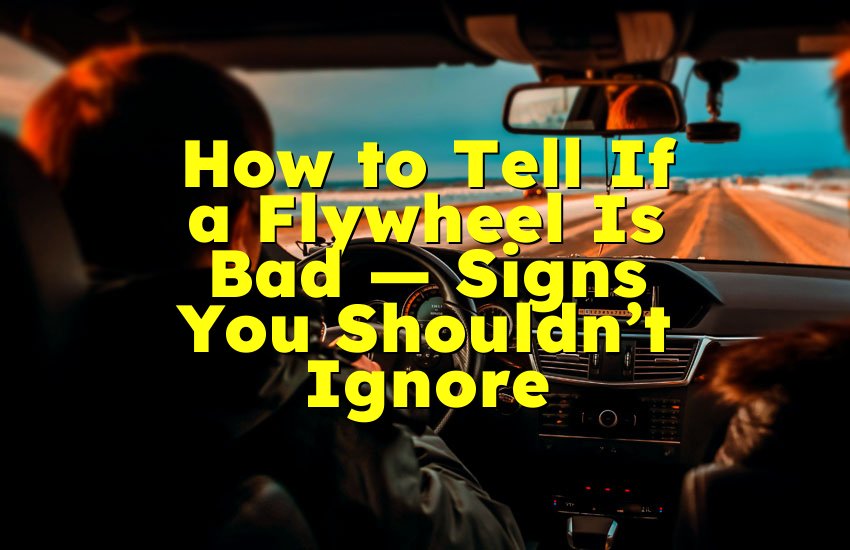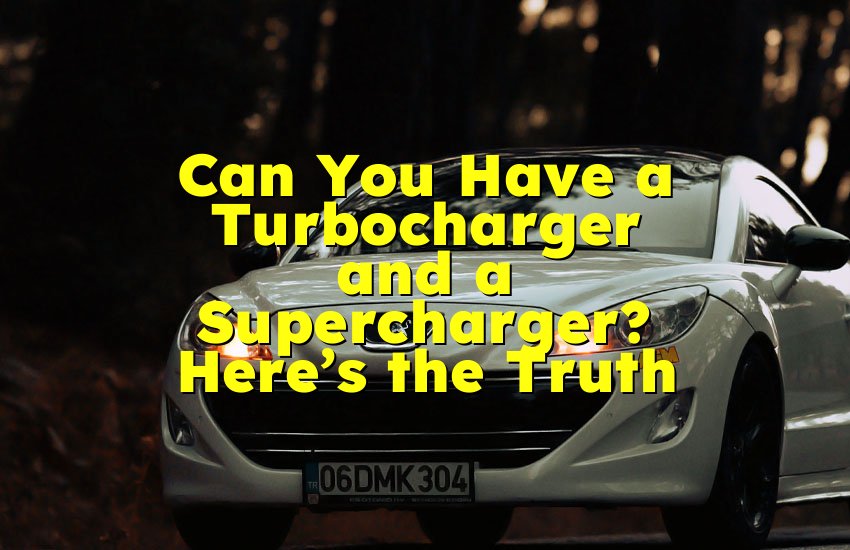As an Amazon Associate, I earn from qualifying purchases at no extra cost to you.
How to Remove Fuel Injectors from Fuel Rail Easily (6 Steps)
You are trying to fix your car and wondering how to remove fuel injectors from fuel rail without making mistakes. I get it. I’ve been there, hands dirty, tools all over the place, confused about where to begin. The good news? You can do this at home, even if you’re not a pro mechanic. In this article, you’ll learn the exact way to take out fuel injectors safely and correctly from the fuel rail, even if it’s your first time. I'll guide you through every part of the process with simple words and real help.
Prepare the Area and Stay Safe
Before doing anything with the fuel injectors, you need to be sure you’re working safely. Fuel systems hold pressure, and fuel is very flammable. So the first thing you must do is prepare your area.
Choose a place that is well-ventilated. An open garage or driveway is best. Keep kids and pets away. You should not smoke or have any fire around. Wear safety glasses and gloves to protect your eyes and hands.
Next, disconnect your car battery. This is very important. Remove the negative terminal of the battery. This will stop any electrical sparks while working on the fuel system. After this, you need to relieve the fuel system pressure.
Most cars have a valve on the fuel rail called a Schrader valve. You can use a small screwdriver or pressure gauge to release fuel from there. Do this slowly and put a rag over the valve so fuel doesn't spray.
You should also keep a fire extinguisher near you just in case. Make sure you have a good light if you’re working in a dark place. Keep your tools ready and close. You may need a wrench, a flat-head screwdriver, a fuel line disconnect tool, and a container to catch fuel.
Wear old clothes. Gasoline may spill, and it can smell bad for a long time. Also, label parts as you remove them. This will make it easier to put them back together.
Make sure the engine is cool before you start. If it was running recently, let it cool for at least an hour. Hot engine parts can burn your skin.
Once everything is safe and ready, only then move on to the next part.
- Pick an open space like a driveway or garage
- Wear gloves, glasses, and old clothes
- Keep tools ready: screwdriver, wrench, container
- Disconnect the battery (negative first)
- Let engine cool before starting
- Release fuel pressure slowly from Schrader valve
- Use a rag to catch any fuel
- Label parts as you remove them
- Keep a fire extinguisher close
- Make sure no kids or pets are near
Remove Any Plastic Covers or Air Intake Parts
Now you need to get to the fuel rail. The fuel injectors sit under some parts in the engine, like plastic covers or the air intake system. These parts are usually in the way, so removing them is the next thing to do.
Start with any plastic engine covers. These are often held by a few screws or just snap in place. Use a screwdriver to take them off carefully. Place them somewhere safe where they won't get damaged or lost.
Next, look at the air intake hose or air filter box. You might have to remove these to get a better view of the fuel rail. Usually, these are held with clamps or screws. Use a flat screwdriver or a socket wrench to loosen them. Carefully unplug any sensors or wires that are connected to these parts.
As you remove these parts, take pictures with your phone. This helps later when you need to put everything back. Keep the screws and clamps in a small container so you don't lose them.
Be gentle when removing hoses. If they feel stuck, try twisting them a little first before pulling. Never yank too hard. You might break plastic parts or tear rubber seals.
Also check if there are any vacuum lines or small wires connected to the intake parts. These should be unplugged gently. Don't pull on the wires, always grab the plug.
You may need to remove the throttle body in some cars. This is usually bolted to the intake manifold. If so, make sure to unplug the throttle cable and sensor first. Take your time and don't rush.
Once all the top parts are off, you should be able to see the fuel rail clearly along with the fuel injectors. Now you're ready to go deeper.
- Remove engine cover with screwdriver
- Take off air intake parts and hoses
- Unplug any sensors gently
- Use container for screws and clamps
- Take pictures for reassembly
- Twist stuck hoses before pulling
- Watch for vacuum lines and wires
- Unplug throttle cables if needed
- Go slow to avoid breaking parts
- Keep parts organized and safe
Disconnect the Fuel Line from the Fuel Rail
Now you are ready to disconnect the fuel line from the fuel rail. This is a very important part. The fuel line is what brings fuel from the gas tank to the injectors. It’s usually connected to the fuel rail with a special clip or quick-connect fitting.
First, check the fitting closely. Most cars use a plastic clip that you can squeeze to release. Some cars need a special fuel line disconnect tool. This tool slides into the fitting and pushes back the locking clips so you can pull the line off.
Before you pull the fuel line, place a rag underneath to catch any remaining fuel. Fuel may still drip out, so be careful. You can also have a container ready to catch it.
When you’re ready, use the correct tool or squeeze the clip gently and pull the line away from the rail. If it doesn't come off easily, don't force it. Double-check that the clip is fully released.
Some people try to use screwdrivers to pry the line off, but that can damage the fitting. It’s better to use the right tool for this.
Once the line is off, plug it or cover it with a clean rag to stop dirt from getting in. You can also buy fuel line caps if you want to seal it tightly.
Also look around for any fuel leaks. If you see fuel dripping, clean it up right away. Fuel smells bad and can be dangerous if left around.
Make sure you don’t bend the fuel line too much. It's usually made of rubber or plastic, and too much bending can crack it.
After disconnecting the line, you are one big step closer to removing the injectors.
- Identify fuel line fitting type
- Use disconnect tool or squeeze clip
- Place rag or container under line
- Remove line gently without force
- Plug or cover the open line
- Clean up any fuel spills
- Avoid bending the line
- Do not use screwdrivers to pry
- Use fuel caps if possible
- Check fitting before moving on
Unbolt and Lift the Fuel Rail
Now it's time to unbolt the fuel rail. The fuel rail is a long metal or plastic bar that holds the fuel injectors in place. It is bolted down to the engine with two or more bolts. You will need a socket wrench to remove them.
Start by finding all the bolts that hold the fuel rail. They are usually on the top of the rail. Use the right size socket and slowly remove the bolts one by one. Put them in a safe spot like a cup or tray.
Once the bolts are out, gently try to lift the fuel rail. It might not come off easily at first. That's normal because the injectors are still stuck into the engine. Wiggle the rail gently from side to side. Do not yank or pull hard. You can use a soft pry tool under the rail, but be careful not to damage anything.
As you lift, the injectors may come out with the rail. This is okay. Some injectors stick to the rail, some to the engine. If they stay in the engine, you will pull them out one by one in the next part.
Make sure you don't lose any rubber seals or O-rings that might fall off. These small parts are important and need to be replaced later. If you see old dry or cracked O-rings, remove them and throw them away.
Once the fuel rail is loose, lift it up and move it gently to the side. You don't want to stretch any wires or hoses that are still connected nearby.
This is a good time to clean the area around the injector holes. Use a clean rag to wipe away any dirt. Don't let anything fall into the holes.
Now the fuel rail is free, and you can clearly see all the injectors.
- Find and remove bolts on the fuel rail
- Use correct size socket
- Lift fuel rail slowly and gently
- Wiggle side to side if stuck
- Use soft pry tool only if needed
- Watch for O-rings and seals
- Set fuel rail aside safely
- Clean injector holes with rag
- Do not let dirt fall inside
- Keep parts organized for reassembly
Remove the Fuel Injectors One by One
Now that the fuel rail is off, you can remove each injector. Look at how they sit in the engine. Each injector is shaped like a small cylinder with a plug on top and a nozzle at the bottom.
Start by unplugging the electrical connector from each injector. These plugs have clips. Press the tab and pull. Do not pull on the wires. If the clip is hard to press, use a small flat screwdriver to help.
Once the plug is off, check how the injector is sitting. Most injectors are just pressed into place with rubber seals called O-rings. Gently grab the injector and twist it a little. Then pull it straight up. If it doesn't come out, wiggle it some more. Be patient.
You may hear a pop sound as it comes out. That's normal. Some fuel may drip out. Have a rag ready. If the injector is stuck badly, you can use a special injector puller or two flat tools to lift both sides gently.
After removing each injector, inspect it. Look at the O-rings. If they are cracked, dry, or torn, they must be replaced. Never reuse old O-rings.
Keep each injector in a clean place. You can put them in a box or a bag. Don't let dirt touch the nozzles. Label them if you want to put the same one back in the same spot.
Now all injectors are removed. You can clean the holes with a rag. Don't spray anything inside unless you're sure it's safe for the engine.
- Unplug electrical connectors from injectors
- Press clip or use small tool gently
- Twist injector and pull upward
- Wiggle if it's stuck
- Use injector puller if needed
- Keep a rag for fuel drips
- Inspect O-rings for damage
- Do not reuse cracked O-rings
- Place injectors in clean box
- Clean injector holes carefully
Clean the Area and Prepare for Reinstallation
Now that all the injectors are out, it's time to clean the area. First, check the injector holes. These should be clean and smooth. Take a clean rag and gently wipe inside each hole. Do not use anything sharp. Be sure no dirt, leaves, or old pieces of rubber are inside.
Next, clean the fuel rail where the injectors go. Use a soft cloth. You can also use some fuel-safe cleaner, but don't soak anything too much.
If you plan to reuse the same injectors, clean them too. Use injector cleaner spray and a soft brush. Be careful with the nozzle tip. Don't damage it.
If you’re putting in new injectors, take them out of the box and check that they match the old ones. Compare the size and shape. Make sure they come with new O-rings. Lightly coat the O-rings with clean engine oil before inserting. This helps them slide in and seal better.
Before installing anything, double-check all connectors, clips, and hoses. Look for broken or cracked parts and replace them if needed.
Once everything is clean and ready, you can start putting the injectors back into the engine.
- Wipe injector holes gently
- Clean fuel rail and ports
- Use fuel-safe cleaner carefully
- Clean old injectors if reusing
- Compare new injectors for fit
- Lubricate O-rings before install
- Inspect clips, wires, and hoses
- Replace broken or cracked parts
- Do not let dirt fall in holes
- Keep everything ready for reinstall
Final Thoughts
Removing fuel injectors from the fuel rail may sound hard, but with the right steps, you can do it safely. Take your time, work carefully, and stay clean and organized. Always stay safe, follow each part step by step, and you'll get great results. You don’t need to be a pro mechanic to do this. Just a little care, patience, and basic tools are enough. After doing it once, you'll feel more confident fixing more things on your car. Doing your own repairs saves money and gives you a real sense of achievement.
| Task | Tools Needed | Time Required | Tips | Warnings |
|---|---|---|---|---|
| Prepare work area | Gloves, glasses, rags | 15 minutes | Pick open space, wear safety gear | Keep fire away |
| Remove plastic covers | Screwdriver | 10 minutes | Take pictures for reassembly | Label each part |
| Disconnect fuel line | Fuel line tool, rag | 10 minutes | Use correct tool, catch fuel | Do not force fitting |
| Unbolt and lift fuel rail | Socket wrench | 15 minutes | Wiggle gently, avoid bending | Watch for O-ring pieces |
| Remove fuel injectors | Hands, small screwdriver | 20 minutes | Twist and pull gently | Don't reuse bad O-rings |
| Clean and prepare for install | Rag, brush, oil | 15 minutes | Lubricate O-rings, inspect parts | Don't drop dirt in injector hole |
Frequently Asked Questions (FAQs)
Is it safe to remove fuel injectors by myself?
Yes, it is safe if you follow all safety steps. You must disconnect the battery and release the fuel pressure before touching anything. Working in a well-ventilated area and keeping away any flames is also important. Wear gloves and safety glasses to protect yourself from fuel. If you go slowly and carefully, you can do it at home without any danger. Just make sure to have all the tools ready and follow each part one by one. If you feel unsure, you can always ask a friend to help or call a mechanic.
Can I reuse old fuel injector O-rings?
It is not a good idea to reuse old O-rings. O-rings are small rubber rings that seal the injector. Over time, they get hard, dry, or cracked. If you reuse them, they might not seal properly and could cause fuel leaks. Fuel leaks are very dangerous. It is always better to use new O-rings when reinstalling injectors. New O-rings are soft and seal better. Always coat them with a little clean engine oil before putting them in. This will help them slide in easily and stay tight.
Do I need special tools to remove fuel injectors?
Most of the time, you don't need many special tools. Basic tools like screwdrivers, socket wrenches, and fuel line disconnect tools are enough. A fuel injector puller can help, but it is not always needed. Some cars have clips or connectors that need a specific tool. It's a good idea to look at your car model and see what's required before starting. Having a rag, a small tray, and some cleaner spray also helps. But overall, most people can do this with tools they already have at home.
Is it okay to clean and reuse old fuel injectors?
Yes, you can clean and reuse old fuel injectors if they are still working fine. Use a fuel injector cleaner spray and a soft brush. Do not damage the nozzle. Also check the O-rings. If they are bad, replace them. After cleaning, test them if possible. Some auto parts stores offer testing services. If an injector is clogged, leaking, or has a broken connector, it's better to replace it. But if they look fine and are clean, you can reuse them.
Can a bad fuel injector cause engine problems?
Yes, a bad fuel injector can cause many problems. Your engine may run rough, misfire, or use more fuel. You may smell gasoline or see a check engine light. A bad injector may leak fuel or not spray correctly. This can hurt your engine over time. That's why it's important to check injectors during maintenance. If you find a bad one, replace it quickly to keep your car running well. Don't ignore the signs of a bad injector.
Do I have to remove the intake manifold?
In many cars, you don't need to remove the intake manifold to get to the fuel injectors. Most fuel rails and injectors are on top of the engine and can be reached easily. But in some car models, the intake manifold may be in the way. If that's the case, you will have to remove it. Check your car's layout before starting. If you need to take it off, be sure to unplug sensors and label parts so you can put everything back correctly.
Is it normal for fuel to leak during injector removal?
A small amount of fuel may drip out when you disconnect the fuel line or remove an injector. That is normal. But it should not be a lot. Always catch it with a rag or container. If fuel keeps leaking or sprays out, then the system pressure was not released correctly. Stop and make sure the pressure is gone. Fuel leaks can be dangerous, so clean them up right away and keep the area dry before continuing your work.
Can I install the injectors without replacing anything?
You can install the same injectors again, but you should always replace the O-rings. Old seals can leak even if the injectors are still good. Also, clean the injector holes and inspect everything before reinstallation. It's best to replace any broken clips or parts now instead of later. Replacing small parts is cheap and helps prevent future problems. So even if you're using the same injectors, give them a fresh start with new O-rings and a clean area.











